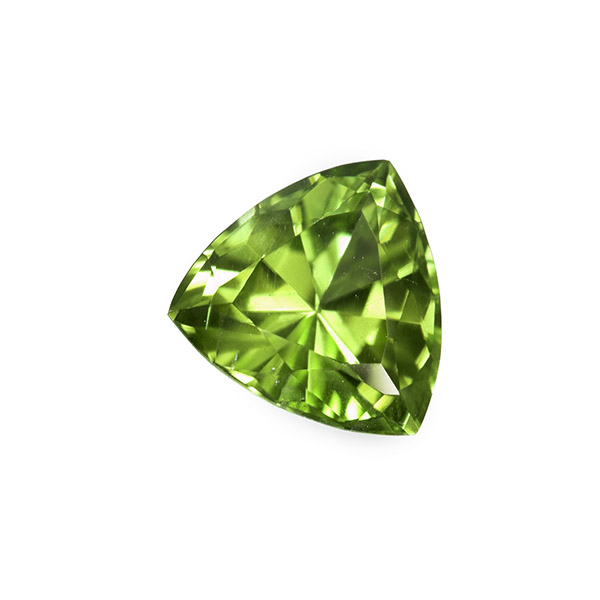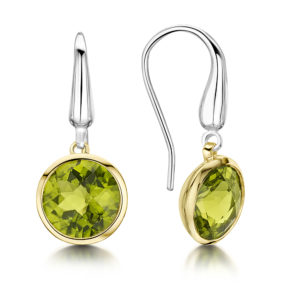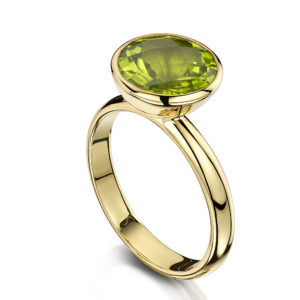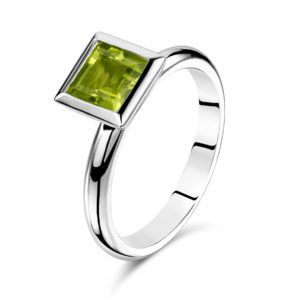



Peridot Key Facts
- 5-7 on the Mohs scale of hardness
- August’s birthstone
- A vivid green or olive green colour
- Occurs all over the world but mined mainly in the USA
- Said to bring success and good luck
General Information on Peridot
Peridot is the name given to gem quality specimens of the mineral olivine. It can be known as three different names- peridot, chrysolite (from the Greek gold stone) and olivine itself. The name peridot is from the Greek work ‘peridona’ which means ‘to give richness’.
Peridot has an olive or bottle green colour due to the presence of iron. It is quite a vivid green and often has a slight tint of gold. It is often described as a Summer Green which coinsides with the fact that Peridot is the birthstone for the month of August. It is also the stone for the Zodiac sign of Libra. Peridot may be given as a gem on the 16th wedding anniversary.
Peridot is one of a few gemstones that come in one colour only. The chemical name of peridot is iron magnesium silicate. The intensity of the colour depends on the amount of iron present. The colour itself can vary from yellow green and olive to even brownish green.
Peridots can occur with cat’s eyes and star peridot is especially rare and precious. The purer green a peridot is, the higher the value. Any tinge of brown greatly diminishes the price as well as visible flaws.
As a general rule peridot is not enhanced by heat treatment
Peridot is not particularly hard as it is only 6.5 to 7 on the Mohs scale so consideration should be given if you choose it for your engagement ring. However it is fairly robust and easy to look after.
Peridot is found on St John’s Island in Egypt, in China, Burma, Brazil, Hawaii, Arizona, Australia, South Africa and Norway. The most beautiful stone comes from the border area between Pakistan and Afghanistan. Stones from East Burma, (now known as Myanmar) have a vivid light green colour and have very fine inclusions with a silky shine to them.

